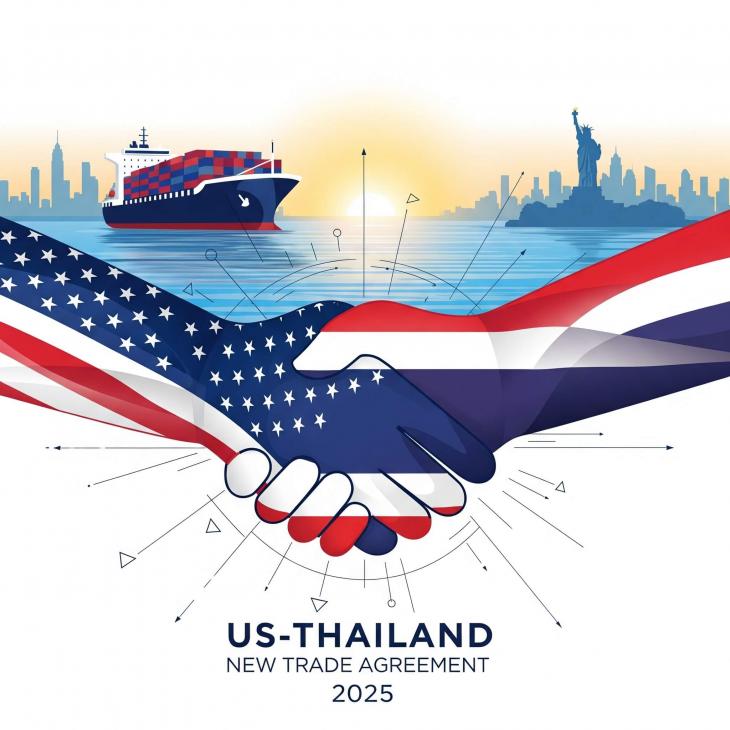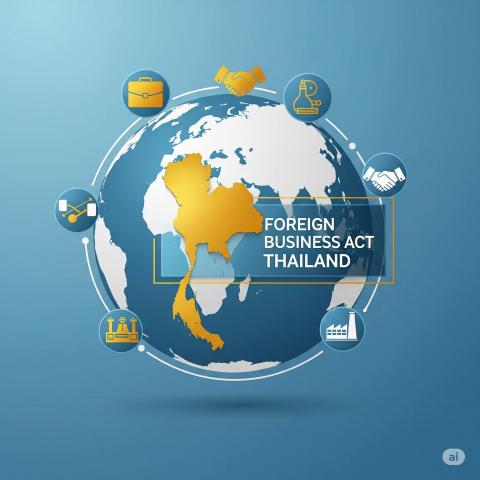A New Era for US-Thai Trade: Unpacking the 2025 Reciprocal Tariff Agreement
In a landmark move for Southeast Asian commerce, the United States and Thailand have established a new reciprocal trade agreement, effective August 1, 2025. This pivotal deal reshapes the trade relationship, introducing a new tariff structure and avoiding previously threatened higher duties. For foreign enterprises engaged with the Thai market, a clear understanding of this agreement is vital for navigating the evolving commercial landscape.
Following intense negotiations, the US has implemented a 19% reciprocal tariff on Thai imports, a considerable reduction from a potential 36% rate. This agreement is designed to foster balanced trade and expand market access for American goods and services in Thailand. Navigating the legal requirements for trade is crucial; for guidance, please refer to our services for obtaining an Import and Export License in Thailand.
Core Elements of the New Trade Pact
The agreement introduces several transformative components that will redefine trade between the US and Thailand. Below is a summary of the essential points:
New Reciprocal Tariff Framework
The central feature of the pact is the new 19% reciprocal tariff. This rate provides a more stable and predictable environment for Thai exporters compared to the uncertainty of the higher threatened tariffs. In exchange, Thailand has committed to a broad liberalization of its import market.
Thailand's Key Concessions
To achieve this new tariff structure, Thailand has agreed to several major concessions aimed at opening its market and boosting foreign investment:
- Widespread Tariff Elimination: Thailand will remove import tariffs on more than 10,000 products from the United States, making American goods more competitive for Thai consumers and businesses.
- Streamlined Market Access: Non-tariff barriers, including cumbersome customs procedures, will be reduced to allow US companies to enter the Thai market more efficiently.
- Foreign Investment Opportunities: The agreement promotes American investment in high-growth sectors such as clean energy, technology, and advanced logistics. Businesses seeking to operate in these areas should understand the requirements for a Foreign Business License.
- Expanded Agricultural Quotas: Quotas for key US agricultural imports like corn, soybeans, and barley will be increased, directly benefiting Thailand's domestic animal feed industry.
What This Means for Your Business
This trade agreement presents both new opportunities and important considerations for companies in both nations.
Prospects for US Companies
The removal of thousands of tariffs and the simplification of market entry procedures present a significant advantage for US exporters. American products can now compete more effectively on price, and new incentives signal clear opportunities for strategic investments in Thailand's future-focused industries.
Considerations for Thai Businesses
While the 19% tariff is a positive outcome compared to the alternative, it remains a critical cost factor for Thai exporters to manage. Furthermore, the agreement introduces stricter "rules of origin" to prevent tariff evasion from other countries. This necessitates robust documentation and supply chain verification.
Broader Context: IPEF and the Treaty of Amity
This bilateral deal complements other important frameworks. It aligns with the goals of the Indo-Pacific Economic Framework (IPEF), which seeks to strengthen regional economic integration. It also builds upon the foundation of the historic US-Thailand Treaty of Amity, which continues to provide essential protections and rights for American investors in the Kingdom.
Frequently Asked Questions (FAQ)
What is the effective date for the new tariff regulations?
The 19% reciprocal tariff on Thai goods entering the US was officially implemented on August 1, 2025.
Which American goods will now be tariff-free in Thailand?
Thailand will phase out tariffs on over 10,000 US products. A detailed list is expected from the Thai Ministry of Commerce, with implementation occurring in stages over the next 3-5 years for some items.
Does this agreement replace the US-Thailand Treaty of Amity?
No, this agreement does not replace the Treaty of Amity. The Treaty allows US citizens to establish businesses in Thailand with rights similar to Thai nationals. This new pact is specifically focused on regulating the import and export of goods.
What are the new "rules of origin" requirements?
Exporters must now provide more rigorous proof that their products are manufactured in Thailand, not merely routed through it to circumvent tariffs applicable to other nations. This requires enhanced compliance and transparent documentation.
External Links for Further Reading
- Office of the United States Trade Representative - Official information on US trade policies.
- Thai Ministry of Commerce - Official updates and regulations from the Thai government.
- The White House - Official announcements from the US administration.




